Search the Blog
Categories
- Books & Reading
- Broadband Buzz
- Census
- Education & Training
- General
- Grants
- Information Resources
- Library Management
- Nebraska Center for the Book
- Nebraska Memories
- Now hiring @ your library
- Preservation
- Pretty Sweet Tech
- Programming
- Public Library Boards of Trustees
- Public Relations
- Talking Book & Braille Service (TBBS)
- Technology
- Uncategorized
- What's Up Doc / Govdocs
- Youth Services
Archives
Subscribe
Author Archives: Mary Sauers
American Democracy Project–Video Contest to Promote the 2020 Census
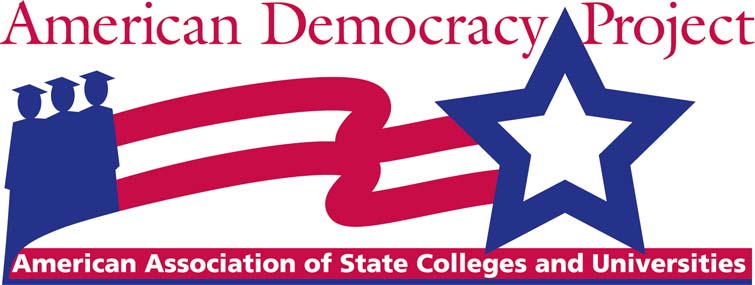
When: April 08, 2020 – April 24, 2020
Time:01:00 PM – 05:00 PM:
The American Democracy Project is sponsoring a video contest to promote awareness for the U.S. Census! Prizes will be awarded to 1st, 2nd, and 3rd place entries; all videos will be judged on accuracy, creativity, and use of visuals/sound. All entries should be submitted to adp@unk.edu by April 24, 2020.
For more instructions, visit https://docs.google.com/document/d/1z3uFwe4jtJgN25Ju2CAE-ovybZ-8UdMIvMFmfEtXrU8/edit?usp=sharing.
Good luck!
Contact:Lydia Behnk
(402) 843-6801
behnkll@lopers.unk.edu
Posted in Census, Education & Training, General, Information Resources, Programming, Technology, What's Up Doc / Govdocs
Tagged census
Leave a comment
Friday Reads: The Other Family, by Loretta Nyhan

“With a dissolving marriage, strained finances, and her life in flux, Ally Anderson longs for normal. Her greatest concerns, though, are the health problems of her young daughter, Kylie. Symptoms point to a compromised immune system, but every doctor they’ve seen has a different theory. Then comes hope for some clarity.
It’s possible that Kylie’s illness is genetic, but Ally is adopted. A DNA test opens up an entirely new path. And where it leads is a surprise: to an aunt Ally never knew existed. She’s a little wild, very welcoming, and ready to share more of the family history than Ally ever imagined.
Coping with a skeptical soon-to-be-ex husband, weathering the resistance of her adoptive mother, and getting maddeningly close to the healing Kylie needs, Ally is determined to regain control of her life. This is her chance to embrace uncertainty and the beauty of family – both the one she was born into and the one she chose.” (Audible)
This book caught my eye because I too was adopted, and as usual, I read and listened to it. I was caught up immediately in the story, and while there are some minor problems with the editing of the audio version, it still held my attention from start to finish.
There are many different ways, and reasons why, adoptees search for their biological families. In Ally’s case, she is desperately looking for answers to explain her daughter’s life-threatening allergic reactions. Ally is so desperate in fact, that she turns to an alternative approach: meditation and desensitization therapy. Through all of the anxiety and uncertainty regarding Kylie’s new treatment, Ally finds not only her “other family,” but her inner strength. That strength helps her resolve issues with her ex, her mom, and her ability to move forward with her life.
Definitely a good read!
Today, April 1st, 2020, is CENSUS DAY!
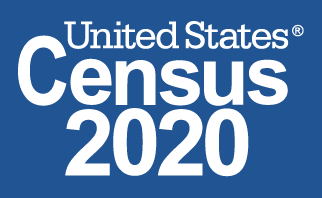
The official Census Day for the 2020 Census has finally arrived!
PLEASE respond to your invitation to participate in the 2020 Census!
Even though we are living in a different time right now, it is still vitally important that we all respond to the Census. For the next 10 years the results from the 2020 Census will determine how billions of dollars will be distributed back to the states, and how local, state, and federal government will be affected.
You can respond online, mail, and phone–so PLEASE respond to the 2020 Census today!
Posted in Census, General, Information Resources, Technology, What's Up Doc / Govdocs
Tagged census
Leave a comment
A History of the Census in the United States : Part 23
The Twenty-Third Census: Census Day was April 1, 2010.

Enumeration
The 2010 census questionnaire was one of the shortest in history – asking just 10 questions of all households in the United States and Island Areas related to name, gender, age, race, ethnicity, relationship, and whether you own or rent your home. Collection of data about education, housing, jobs, etc. collected by previous censuses long-form questionnaires are now collected by the U.S. Census Bureau’s annual American Community Survey.
In addition to the reduced number of questions, the Census Bureau announced it would count same-sex married couples in June 2009. When noting the relationship between household members, same-sex couples who are married could mark their spouses as being “Husband or wife”, the same response given by opposite-sex married couples. An “unmarried partner” option was available for couples (whether same-sex or opposite-sex) who were not married.
Marketing and Promotional Efforts
Following the success of Census 2000’s advertising, the 2010 census featured a $133 million, 4-month advertising campaign. Although officially beginning January 18, 2010, the advertising campaign debuted the night of January 17 during NBC’s Golden Globe Awards broadcast.
In total, the 2010 advertising campaign included television, radio, print, outdoor and the Internet advertising, produced in an unprecedented 28 languages. More than half of the budgeted advertising would target media consumed by minority and ethnic audiences. The Census Bureau anticipated that the campaign would reach the average person 42 times with messages about the importance of participating in the census.
From Super Bowl XLIV and the 2010 Winter Olympics, to popular primetime shows, the 2010 Census advertising campaign represented the most extensive and diverse outreach campaign in U.S. history. The advertising rollout also included updates on other outreach efforts, such as the Census in Schools program, “Portrait of America” Road Tour, and the national and regional partnership programs targeted at reaching hard-to-count populations.
Other key elements of the 2010 Census Integrated Communications Campaign included:
- A national road tour with 13 vehicles traveling to key events across the country, such as NASCAR races, the Super Bowl, and parades.
- A 2010 Census Web Site.
- “Teach Census Week” in schools nationwide in February, part of the Census in Schools program.
- Nationally broadcasted public service announcements airing nationwide.
- Outreach activities launched by national and local corporate, foundation, government, and nonprofit organizations.
Key 2010 Census Dates
September 26, 2005 – The Census Bureau awards a $500+ million contract to the Lockheed Martin Corporation for the 2010 Census Decennial Response Integration System (DRIS).
September 6, 2007 – The Census Bureau awarded its 2010 Census communications contract, worth an estimated $200 million, to Draftfcb of New York.
March 30, 2009 – The Census Bureau launches a massive operation to verify and update more than 145 million addresses as it prepares to mail out 2010 census questionnaires.
July 23, 2009 – The Census Bureau began printing 2010 Census questionnaires.
October 26, 2009 – The Census Bureau launches the 2010 Census Web Site.
January 17, 2010 – First 2010 Census television advertisement airs during NBC’s Golden Globe Awards broadcast.
January 18, 2010 – The 2010 census advertising campaign officially launches.
January 25, 2010 – Remote Alaska enumeration begins.
March 1, 2010 – 2010 census questionnaires begin arriving in mailboxes throughout the United States and Island Areas.
March 8, 2010 – Advance letters are mailed to 120 million addresses nationwide, notifying households that 2010 Census forms will be arriving March 15 -17.
April 1, 2010 – Census Day. Households are asked to supply data in their census questionnaire that is accurate as of April 1.
April 30, 2010 – Enumerators begin door-to-door operations to collect census data from households to follow up with households that either didn’t mail back their form or didn’t receive one.
July 30, 2010 – The toll-free telephone assistance line is closed, ending 2010 census data collection. More than 130,000 interviews were completed via the toll-free line.
August 10, 2010 – The Census Bureau announces that it will return $1.6 billion to the U.S. Treasury as a result of lower-than-expected census costs.
October 21, 2010 – The final 2010 census mail response rate is announced as 74 percent – matching Census 2000’s rate.
December 21, 2010 – The Census Bureau announces the 2010 population counts and delivers the apportionment counts to the president.
Further Information
- “The 2010 Decennial Census: Background and Issues,” Congressional Research Service, February 3, 2011.
Information provided from Census.gov
Posted in Books & Reading, Census, Education & Training, General, Information Resources, What's Up Doc / Govdocs
Tagged census
Leave a comment
A History of the Census in the United States : Part 22
The Twenty-Second Census: Census Day was April 1, 2000.
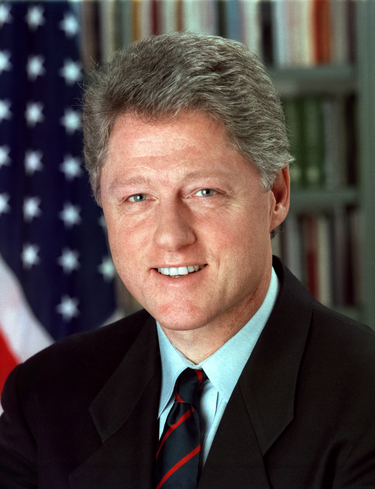
Enumeration
The short form contained only seven questions, the shortest census questionnaire since 1820. The long form asked 52 questions of approximately 1 in 6 households (approximately a 17 percent sample of the population). In previous censuses, responses to the race question were limited to a single category; in 2000, for the first time, respondents could check as many boxes as necessary to identify their race. A 1996 law mandated a new question on grandparents as care givers. Questions on disability were expanded to include hearing and vision impairment and problems with learning, remembering or concentrating. Questions on children ever born, source of water, sewage disposal and condominium status, were dropped; the 1990 census short form question on rent and property value became a long form question.
Efforts to Improve Participation
To counter a decline in the questionnaire mail-back rate, the Census Bureau embarked on an aggressive paid advertising campaign, awarding a $167 million contract to the Young and Rubicam Company for national and local print, television and public advertising campaign. This campaign consisted of more than 250 television, print, radio, outdoor, and other advertisements in 17 languages; it reached 99 percent of all U.S. residents. By the end of the campaign, the census message – “This is your future. Don’t leave it blank.” – had been seen or heard an average of 50 times per person. This campaign, along with an aggressive non-response follow-up program, brought the mail-back rate up to about 67 percent.
There were additional options for responding to the census. People receiving the short form could respond on the Internet, and about 70,000 households did so. Telephone questionnaire assistance centers provided questionnaire help in 6 languages and took responses to the short form over the phone.’
Reengineered Census Plan for 2000
Following the costly litigation generated by the 1980 and 1990 censuses, particularly that which sought statistical adjustment of the census counts to correct for persons estimated to have been missed or duplicated, the Census Bureau designed a plan for the 2000 census that it believed would eliminate the possibility of litigation. The Census Bureau’s May 1995 plan for a “reengineered census” was the culmination of a four-year process of discussion and review of census plans by a broad spectrum of experts, advisors, and stakeholders. The plan was further refined and on February 28, 1996, Commerce and Census Bureau officials made public.
The Plan for Census 2000
The plan called for using statistical sampling techniques in two principal ways. The first was to alter the traditional 100-percent personal visit of non-responding households during nonresponse followup (NRFU). Instead, a small percentage of non-responding households would be followed up on a sample basis. Information from this sample would be used to estimate the number of persons and their characteristics in the remaining non-responding households.
The second involved the Census Bureau taking a sample of 750,000 housing units to be matched to housing unit questionnaires obtained from mail and telephone responses as well as personal visits. The goal of this quality check survey was to develop adjustment factors for persons estimated to have been missed or duplicated in the census and correct the census counts to produce one set of numbers. This was to be a “one-number census,” corrected for net coverage errors, that is, Integrated Coverage Measurement (ICM). ICM was a significant departure from 1990, when the results of the post-enumeration survey (PES) were used to produce a separate set of statistically adjusted counts after the delivery of the apportionment counts and redistricting data. This resulted in two competing sets of population numbers.
Congressional Opposition to the Census 2000 Plan
Beginning with the fiscal year (FY) 1997 appropriations process, the congressional majority included language in appropriations legislation that would prohibit the use of sampling in Census 2000 or the expenditure of funds for Census 2000 sampling-related planning activities.
Debate over the sampling issue postponed passage of the Commerce Department’s FY 1998 appropriations bill until the end of November 1997, two months into the new fiscal year. With the threat of a stalemate between the congressional leadership and the Clinton administration in the debate over the use of statistical sampling in Census 2000, the two sides reached a compromise in the enacted legislation. The legislation, among other things, permitted the Census Bureau to continue to plan for sampling, while directing the agency to plan for a census without statistical sampling. This was later referred to as “dual-track” planning.
The law also set up an eight-member “Census Monitoring Board” to observe and monitor all aspects of the planning and implementation of Census 2000.
Litigation and Revision to the Census 2000 Plan
Two lawsuits were filed in February 1998 – including one filed by the U.S. House of Representatives – that challenged the constitutionality and legality of the planned uses of sampling to produce the apportionment counts. In both cases, the federal district courts decided for the plaintiffs. The Department of Commerce sought review of the district court decisions by the United States Supreme Court. The Supreme Court agreed to hear the cases, and oral argument took place on November 30, 1998. On January 25, 1999, the Court held in Department of Commerce v. U.S. House of Representatives that the Census Bureau’s proposed plan to use statistical sampling in the decennial census for purposes of determining congressional apportionment violates the Census Act (the Census Bureau’s authorizing statute).
Thus, the Census Bureau could no longer pursue its Census 2000 plan that included the Integrated Coverage Measurement (ICM) program and sampling for nonresponse followup. However, following the Supreme Court ruling, the Census Bureau issued a revised plan in which it stated that it planned to produce statistically adjusted data for non-apportionment uses of census data, including redistricting. But in March 2001, following the delivery of the apportionment counts, the Census Bureau recommended against the use of the adjusted data for redistricting, because of concerns regarding their accuracy. The secretary of commerce accepted the recommendation and determined that the unadjusted data would be released as the Census Bureau’s official redistricting data. In October 2001, after considering the possible use of the adjusted data for non-redistricting purposes – for example, their incorporation in the Census 2000 long-form (sample) data products – the Census Bureau director rejected the use of the adjusted data for such purposes.
Technological Advances
The Internet became the principal dissemination medium for 2000 census data. All four of the detailed data files, now called Summary Files, were available to be downloaded as soon as they were released. Individual tables could be viewed through the Census Bureau’s online database, known as the American FactFinder. Additionally these files were available for purchase on CD-ROM and DVD. The number of printed publications was reduced and the number of printed pages in the report series was by about one-tenth of the 1990 census publication program.
Further Information
- The History of Census 2000 is published in two volumes. Volume 1 [PDF 14.3MB] contains chapters one through six, and Volume 2 [PDF 5.7MB] contains chapters seven through twelve.
- Population Profiles of the United States: America At the Close of the 20th Century [PDF 2.05MB]
Information provided from Census.gov
Posted in Books & Reading, Census, Education & Training, General, Information Resources, What's Up Doc / Govdocs
Tagged census
Leave a comment
Nebraska is #1 in 2020 Census Response Rate!

Currently, Nebraska is #1 in the number of people who have responded to the 2020 Census! Let’s keep that going by responding to the Census today!
Even though we have a lot on our minds right now, the 2020 Census is still vitally important! Over the next 10 years, the numbers collected from this year’s Census will help determine how federal funds are distributed to your state.
PLEASE RESPOND to the 2020 Census today!
Are you curious about how other states are responding to the 2020 Census? Stay up to date with a map of self-response rates from across the United States. Start here: 2020 Census Response Rates
Posted in Census, Education & Training, General, Information Resources, Technology, What's Up Doc / Govdocs
Tagged census
Leave a comment
Drinking Water Safe During COVID-19 Pandemic

LINCOLN – As Nebraskans are taking preventative measures against COVID-19, the Drinking Water division of the Nebraska Department of Health and Human Services (DHHS) would like to remind everyone that drinking water remains safe to use.
The Centers for Disease Control and Prevention (CDC) reported that COVID-19 has not been detected in drinking water, and that conventional water treatment methods of filtration and disinfection — which are in most municipal drinking water systems — should remove or inactivate the virus causing COVID-19.
“Common disinfection methods used in water and wastewater treatment are expected to be effective for inactivation of coronaviruses when executed properly,” said Sue Dempsey, administrator of the DHHS Drinking Water Division.
Dempsey advises water system operators to continue monitoring drinking water disinfection processes for systems with upstream wastewater impacts both during and after the outbreak for infectious coronaviruses.
Although drinking water from the tap is safe for public consumption, federal guidance also recommends that the public consider maintaining a supply of bottled water. If people are ill and have to isolate in their own homes, it is easiest to use bottled water rather than sanitizing water glasses that might be shared with the rest of the household.
Stay up to date on the latest news regarding the Coronavirus with the World Health Organization, CDC and DHHS.
Resources on Copyright & Emergency Remote Teaching & Research

Library Copyright Experts have joined together to provide these resources for higher education, including college, research, community college, and special libraries:
- Statement on Fair Use and Emergency Remote Teaching and Research
- Copyright Office Hours – remote office hours for fellow higher education librarians with questions
- PRACTICAL INFO: Rapidly shifting a course from in-person to online – very high-level overview of the issues from the University of Minnesota (Nancy Sims), Creative Commons licensed, feel free to adapt for your campus – see examples below
- ASERL Webinar: “Yes, You Can Scan That Textbook”
- DATE & TIME: Tuesday, March 17, 2020 at 2pm ET / 1pm Central Time
- REGISTER: https://attendee.gotowebinar.com/register/7222248085692610316
Other resources:
- Kyle K. Courtney blog post on exigent circumstances
- Terry Fisher’s guide to emergency online pedagogy focusing on practices rather than tech from developing CopyrightX
- ICOLC Statement on the Global COVID-19 Pandemic and Its Impact on Library Services and E-Resources
- Vendor Covid-19 Related Donations and Pro Bono Access
- Publishers & Vendors Offering Access for Distance Learning & Research During COVID-19
- Ohio State University Libraries’ Copyright Services resource on Copyright and eLearning
- Privacy for online teaching by Library Freedom Project
Statewide COVID-19 Information Line Opens for Residents
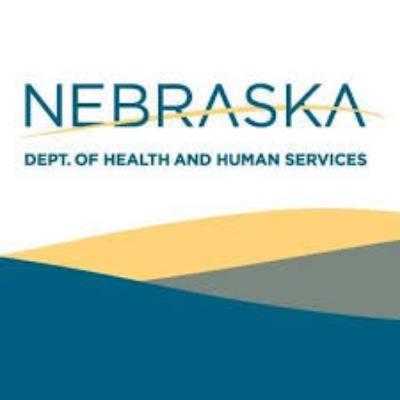
Lincoln –As Nebraska continues to adjust to a new normal as a result of the impacts of COVID-19 on the state, the Nebraska Department of Health and Human Services (DHHS) has set up a coronavirus (COVID-19) information line that will allow residents to get answers to general questions and receive information on resources available. That number is (402) 552-6645; hours of operation are 8 a.m.-8 p.m. CST, 7 days a week.
”DHHS is working hand in hand with local health departments and the federal government to ensure that we stop the spread of this virus,” said Dr. Gary Anthone, Director of Public Health and Chief Medical Officer for DHHS. “Keeping Nebraskans safe and illness-free is our top priority. Our info line will be a crucial part of that effort by allowing us to swiftly answer questions about how the state is responding to the needs of its residents and share the latest information and resources to help keep Nebraskans informed.”
If you are concerned that you may have COVID-19, it’s important to remember to call ahead to your healthcare provider to be screened over the phone. The provider can evaluate and determine if testing is necessary. Flu activity is also still high in Nebraska. Flu tests should be considered as a first test option before considering a COVID-19 test.
The Department urges you to self-monitor and contact your health care provider (via phone or email) first to discuss if your symptoms are significant enough to warrant a trip to the medical office. Following this guidance will allow those with the imminent need to get treatment, reduce your potential exposure and minimize the load on health care providers.
In addition to the state’s information line, some counties have also established hotlines. They include:
- DOUGLAS COUNTY/OMAHA: Douglas County Health Department’s COVID-19 Information Line is open weekdays from 8:30 a.m. to 4 p.m. at (402) 444-3400 to answer general questions about this new disease. The line is answered in English and Spanish. The United Way’s 2-1-1 information line is also taking calls when the DCHD line is closed.
- LANCASTER COUNTY/LINCOLN: The Lincoln-Lancaster County Health Department has established a hotline for self-reporting, guidance and next steps. (402) 441-3400
Local health departments are also a helpful resource. A map of Nebraska’s local health departments can be found here – http://dhhs.ne.gov/CHPM%20Maps/NE_Health_Dept_Map_Dec_2016.pdf.
Visit the DHHS COVID-19 webpage at http://dhhs.ne.gov/coronavirus and CDC’s website at https://www.cdc.gov/covid19.
DHHS will continue to update Nebraskans through the DHHS website and on Facebook and Twitter as we have new information. The CDC’s website is also a good resource for COVID-19 information – https://www.cdc.gov/covid19.
A History of the Census in the United States : Part 21
The Twenty-First Census: Census Day was April 1, 1990.
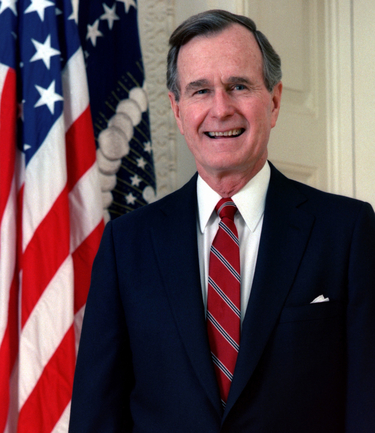
The Census Bureau relied on extensive user consultation prior to the census to guide its efforts to refine both the long and short form questionnaires and the resulting data products. The agency held close to 100 meetings with groups including interested citizens, state agencies and legislatures, and public and private organizations throughout the country. It also solicited recommendations from federal agencies.
Enumeration
The 1990 census used two questionnaires: A short form asked 13 questions to 100 percent of the population and a long form asked 45 questions to 20 percent. Questions on the long form covered topics as diverse as marital history, carpooling arrangements, number of stories in their dwelling place, presence of elevators, and type of cooking and water-heating fuel used. Questions about the presence of air conditioning, the number of bathrooms, and type of heating equipment were dropped from the housing section of the 1990 census.
An additional question on congregate housing (such as, “Does the monthly rent include any meals?”) was added and the question on disability was revised, replacing the 1980 question on ability to use public transportation with one on ability to go outside of the home alone and to take care of personal needs.
Efforts to Improve Coverage and Completeness
Americans were alerted to the importance of responding to the 1990 census by extensive public television, radio, and print advertising. Promotion activities included local “complete count” committees, information kits and lesson plans for schools (Census in Schools), for churches, local government outreach and partnerships, and pro bono public service announcements, costing approximately $67 million.
The Census Bureau built upon its “T-Night” and “M-Night” itinerate person enumeration programs from 1980 with “S-Night” (“S” standing for Streets/Shelters). S-Night was a one-night sweep, conducted in major cities, of homeless shelters nationwide and other areas where the homeless were known to congregate. Many in the media billed this event, which took place on March 20, 1990, as a “homeless census,” although there is no way to determine the proportion of the homeless population that was counted on “S-Night.”
Following the 1980 census, the Census Bureau initiated plans to study the possibility of statistically adjusting the 1990 census to correct for the undercount. As a part of a planned post enumeration survey (PES) the Census Bureau would complete a contemporaneous survey of households and compare the results to information from the census for the same block clusters. With these data, the Census Bureau hoped to be able to develop adjustment factors to compensate for the anticipated undercount.
In October 1987, the undersecretary of commerce for economic affairs announced that, because the Commerce Department did not intend to statistically adjust the census for either undercounts or overcounts, he was canceling the Census Bureau’s adjustment-related planning activities for the 1990 census.
In November 1988, New York City and a coalition of state and local interests joined forces to file a lawsuit to compel the Census Bureau to reconsider the use of statistical adjustment of the population totals in light of the expected undercount from the 1990 census. In July 1989, the Commerce Department and the New York plaintiffs reached a partial resolution of the lawsuit. The Census Bureau would reinstate the PES (but with a smaller sample size than originally planned) and use it to produce population data that had been adjusted for the projected undercount. These data would be judged against the unadjusted data by an expert panel – the Secretary of Commerce’s Special Advisory Panel (SAP), which would provide advice on whether to adjust the 1990 population figures.
Technological Advances
The Topologically Integrated Geographic Encoding and Referencing System (TIGER), developed by the U.S. Geological Survey and the Census Bureau, was introduced for the 1990 Census. It is a computerized representation of various map features such as streets, and rivers, and census geographic boundaries and their attributes such as latitude, longitude and address ranges. TIGER was used to geographically code addresses into appropriate census geographic areas, as well as to produce the many different maps required for data collection and tabulation.
In 1985 the Census Bureau was the first government agency to make information available on CD-ROM, a new and relatively untested medium. Six years later, detailed census data, which for several decades had been available only to organizations with large mainframe computers, was made accessible by anyone with a personal computer. As in 1980, 1990 census data were available in print, on computer tape, and on microfiche. In addition to these media and CD-ROM, selected data were also made available online through two vendors of online services- DIALOG and CompuServe.
Intercensal Activities
Demographic analysis showed that the 1990 census had an estimated net undercount of 1.8%, with an appreciably larger net undercount rate for African Americans than for other residents. The PES sampled 165,000 households in 7,500 blocks, and the Census Bureau compared this data with data from the census for the same block clusters. By comparing the data from these two sources, Census Bureau statisticians were able to estimate the numbers and characteristics of those missed or improperly counted by the enumeration. From there, the statisticians developed statistically adjusted population counts down to the block level.
In June 1991, the Undercount Steering Committee, a Census Bureau group charged with advising the director on adjustment recommended using the adjusted population counts. Following this recommendation, the director herself came out in favor of adjustment. However, the undersecretary of commerce for economic affairs, who oversees the Census Bureau disagreed. The secretary of commerce’s SAP split, four votes to four.
Responding to the mixed recommendations, the secretary of commerce announced in July 1991 that he did not find the evidence in favor of using adjusted counts convincing. He decided that the 1990 census would use the unadjusted totals.
Following announcement of the secretary’s decision, the New York plaintiffs resumed their lawsuit. The federal district court decided in favor of the Department of Commerce in April 1993. Plaintiffs appealed the ruling, and the U.S. Court of Appeals rejected the district court ruling and ordered that the case be returned to the district court for further proceedings. The issue was finally taken up by the Supreme Court, which in March 1996 upheld the secretary’s decision not to adjust the 1990 census counts, but did not rule on either the legality or constitutionality of the use of statistical adjustment in producing the apportionment counts.
Further Information
- A detailed procedural history of the 1990 census is available in Procedural History: 1990 Census of Population and Housing [63 MB]
- Reports and statistics from the 1990 census
Information provided from Census.gov
Posted in Books & Reading, Census, Education & Training, General, Information Resources, What's Up Doc / Govdocs
Tagged census
Leave a comment
Data.Census.gov Replacing American FactFinder
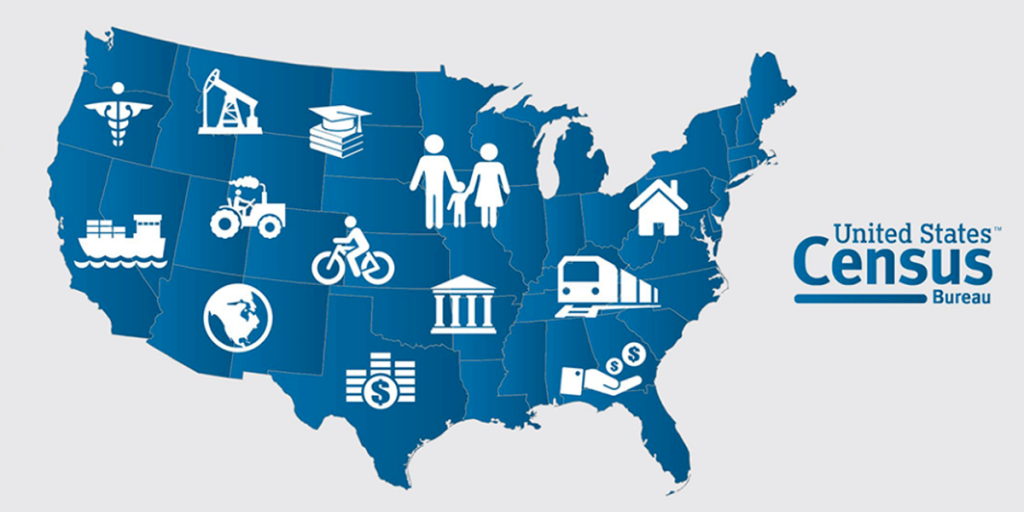
American FactFinder (AFF) will be decommissioned and offline on March 31, 2020.
What is data.census.gov?
Data.census.gov is the new platform to access data from the U.S. Census Bureau. The vision for data.census.gov is to improve the customer experience by making data available from one centralized place so that data users spend less time searching for data content and more time using it.
This vision stems from overwhelming feedback that the Census Bureau has received to simplify the way customers get data. The Census Bureau continues to work on the customer experience so that it is not necessary for data users to know Census Bureau jargon or perform a complicated search to find the data that they need.
Transition From American FactFinder
American FactFinder (AFF) will be decommissioned and offline on March 31, 2020.
Data previously released on AFF are now being released on the U.S. Census Bureau’s new dissemination platform, data.census.gov. Since we are a developing site, not all the data from AFF have been migrated over to data.census.gov. Below is an overview of our data migration status that will be updated regularly.
| AFF Data Sets Coming Soon to data.census.gov | Until then, find it here: |
| American Community Survey: | |
| 2010 to 2015 1-Year Selected Population Profiles | Availability Spreadsheet |
| 2011-2015 5-Year Selected Population Tables | |
| 2011-2015 5-Year American Indian & Alaska Native | |
| 2010 Decennial SF2 and PL | FTP |
| 2000 Decennial | FTP |
| New Data Sets Coming to data.census.gov | Until then, find it here: |
| Population and Housing Unit Estimates | API and Program Page |
| Annual Survey of Manufactures | API |
| Public Sector (Govs) | FTP |
| Commodity Flow Survey | Program Page |
| Older Data Sets Not Available on data.census.gov | Find it Here: |
| American Community Survey Data Prior to 2010 | FTP (Detailed Tables) |
| Nonemployer Data Prior to 2012 | API |
| County Business Patterns Prior to 2012 | API and FTP |
| Economic Census Prior to 2012 | FTP |
| Economic Census Island Area Prior to 2012 | FTP |
| Commodity Flow Survey Prior to 2012 | Program Page |
| 2010 EEO | FTP |
| Products No Longer Available |
| Quick Tables (QT) |
| Geographic Comparison Tables (GCT) |
| Ranking Tables (GRT) |
| Geographic Header (G001) |
Posted in Census, Education & Training, General, Information Resources, What's Up Doc / Govdocs
Tagged census
Leave a comment
Update: Libraries and the 2020 Census

| The Census form opens March 12 (That’s tomorrow!) Beginning March 12, households will begin receiving 2020 Census mailings and can start responding. These key resources can help your library staff prepare: Have 2 minutes? Read ALA’s “Responding to the Census (PDF)” Have 10 minutes? Watch this new “2020 Census Training Video for Public Library Staff” from libraries in Cuyahoga County, Ohio Have 2 hours? Read ALA’s “Libraries’ Guide to the 2020 Census (PDF)” Find ALA’s full collection of resources at ala.org/census. |
| Invite your elected officials to fill out their Census at the library Make sure your elected officials know how your library is supporting a complete count in the 2020 Census! One idea: invite your elected officials to fill out their own Census form at the library. It’s a great photo opportunity – and they can share it to spread the word about the Census and how the library can help. You can use ALA’s template (DOC) to invite your local, state, and federal officials. Be sure to coordinate with your library director and communications or government relations staff. |
| Grant opportunity from the National League of Cities The National League of Cities is accepting applications for grants for Census activities. Libraries are eligible to apply if they are a city agency or are partnering with a city government (get a letter from a mayor near you). Apply as soon as possible, as applications are being reviewing on a rolling basis. |
| New Census materials from Sesame Street and Dr. Seuss Looking for materials to use in your Census outreach with children and families? Check out new free materials from Sesame Workshop and Seussville. For more resources, visit Count All Kids and the Census Bureau. |
| Coming soon: Mobile Questionnaire Assistance Later this month, the Census Bureau will begin its Mobile Questionnaire Assistance operation in locations across the country. The Census Bureau may contact libraries about setting up Mobile Questionnaire Assistance at your location. To learn more, see the Census Bureau’s fact sheet. If you have questions or would like to invite Mobile Questionnaire Assistance to your library, contact your local Census Bureau Partnership Specialist. Note that Mobile Questionnaire Assistance will be available in limited areas, targeting communities with low self-response rates. |
| Special report in American Libraries magazine The cover story in this month’s American Libraries magazine is a special report on the 2020 Census. To learn more about what libraries across the country are doing, take a look! |
A History of the Census in the United States : Part 20
The Twentieth Census: Census Day was April 1, 1980.
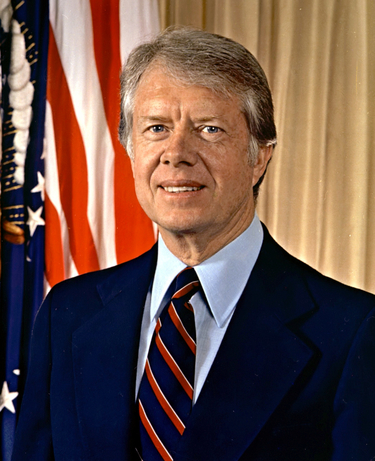
Enumeration
Due to the success of the mail-out/mail-back questionnaire in 1970 the program was expanded for 1980 with about 95 percent of the U.S. population now enumerated in this manner.
The 1980 short form contained 7 population questions and 11 housing questions; the long form contained an additional 26 population and 10 housing inquiries. A question on Spanish or Hispanic origin or descent was added to the 100-percent questions for the first time; in 1970 this question was asked of only 5 percent of the population.
The 1980 census also included two small surveys. The Components of Inventory Change Survey obtained information on the number and characteristics of housing units that changed or stayed the same between 1973 and 1980. The Residential Finance Survey collected data on mortgages, shelter costs, selected housing characteristics and owner characteristics.
Efforts to Improve Coverage and Completeness
An extensive public service advertising campaign directed by the Census Bureau’s Census Publicity Office, which was established in 1978, focused on increasing the public’s awareness of the census and encouraging people to complete and mail back their questionnaires. The Census Bureau secured the free services of the Advertising Council, which in turn hired the firm of Ogilvy & Mather to develop the campaign.
Additionally, the Census Bureau made a special effort to enumerate historically undercounted groups during two programs, “M-Night” (“M” for mission) and “T-Night” (“T” for transient). On M-Night, specially trained enumerators counted people staying in homeless shelters, soup kitchens, bus and rail stations, dormitories, and others. On T-Night, the enumeration focused on hotels and motels with permanent residents.
Technological Advances
The Census Bureau developed the State Data Center Program to simplify public access to data available on computer tapes. Agreements between state governors and the director of the Census Bureau committed the agency to provide free copies of any Census Bureau electronic and printed information and products to the states; the states, in turn, agreed to develop a network of affiliate organizations (state executive departments, chambers of commerce, councils of governments, university research departments or libraries) by which census information would be delivered to local users. By the mid-1980’s all states were participating in the program, which encompassed about 1,200 state and local organizations.
Intercensal Activities
Demographic analysis of the 1980 census showed that once again the census, despite reaching the overwhelming majority of people in the United States, undercounted the population, this time by about 1.2 percent. More troubling, the estimated net undercount rate for African Americans was 3.7 percentage points higher than that for all other races combined.
Before the enumeration process had finished, the city of Detroit sued, demanding that statistical adjustment be used to compensate for those estimated by the Census Bureau to have been missed or improperly counted. Shortly thereafter, several other states and localities, including the city and state of New York, also filed suit. The Census Bureau announced in the fall of 1980 that it did not plan to adjust its population totals using statistical methods because it could not be sure of the number and distribution of illegal aliens and other undercounted groups.
The New York suit would eventually become the most prominent case; a federal district court ruled in the plaintiffs’ favor in late 1980, ordering the Census Bureau to adjust its numbers to correct for the undercount. The Supreme Court stayed this and other rulings in December 1980, allowing the Census Bureau to report its unadjusted figures to the president. A federal appeals court finally ruled, in 1987, that the census figures should not be adjusted to account for the undercount because the Census Bureau’s decision not to adjust was not arbitrary and capricious.
Further Information
- A detailed procedural history of the 1980 census is available in Procedural History: 1980 Census of Population and Housing [ZIP 80MB]
- Reports and statistics from the 1980 census.
Information provided from Census.gov
Posted in Books & Reading, Census, Education & Training, General, Information Resources, What's Up Doc / Govdocs
Tagged census
Leave a comment
A History of the Census in the United States : Part 19
The Nineteenth Census: Census Day was April 1, 1970.
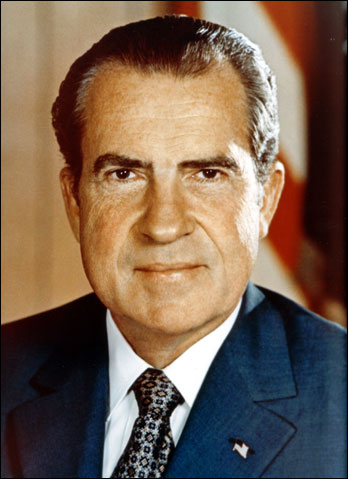
In 1966, the Census Bureau solicited suggestions from its advisory committees and from the general public about the makeup of the census and the availability of the resulting data products. It instituted a series of 23 local public meetings around the country to broaden the scope of its efforts, which resulted in numerous proposals for additional inquiries about the scope and structure of the census, and interest in increasing data products published, particularly for smaller areas such as blocks.
Enumeration
Studies after the 1950 and 1960 censuses revealed that those censuses had undercounted certain segments of the population. Researchers also noted a growing distrust of government and resistance to responding to the census, despite an increasing need for accurate information in both the private and public sectors. In large measure, the increased need for data resulted from the federal government’s reliance on population and other information collected by the census when distributing funds to state and local governments. In an effort to reduce the complexity of its products, the Census Bureau reduced the number of inquiries on the long-form questionnaire from 66 to 23.
The Census Bureau created an address register for densely settled areas that U.S. Post Office employees who were familiar with their routes were instructed to correct and update as needed. The register was also used to ensure that all housing units were accounted for when enumerators had completed their assignments.
The U.S. Post Office delivered census questionnaires with instruction sheets to every household several days prior to Census Day. In areas with a substantial number of Spanish-speaking households, a Spanish-language version of the instruction sheet was also enclosed. For the first time, a separate question on Hispanic origin or descent was asked, but only of a 5 percent sample of the population.
Also for the first time, residents of urban and surrounding areas were instructed to mail their forms back to the Census Bureau where enumerators reviewed them and used follow-up interviews to check on missing or incorrect responses. Rural householders received questionnaires in the mail, but were asked to hold the form for pickup by an enumerator. A letter explaining the need for the data collected and emphasizing the confidentiality of responses accompanied all census questionnaires.
Sampling
Only 5 questions were asked of all individuals: relationship to household head, sex, race, age, and marital status. Other questions were asked of a 15 percent sample and still others of a 5 percent sample. Questions common to both samples resulted in a 20 percent sample.
Technological Advancement
Computerized address lists, called Address Coding Guides, helped assign census geographic codes to questionnaires.
A major innovation for the 1970 Census was the production of a series of computer tape files, called “Counts.” Counts one, two, and three contained complete count data for block groups/enumeration districts, census tracts and minor civil/census county divisions, and blocks, respectively. The fourth through sixth Counts provided sample data for geographic areas of varying population size. The Census Bureau also produced six Public Use Microdata Sample files, each containing complete information for a small sample of the population; roughly two million individuals. A variety of public and private institutions participated in the Census Bureau’s Summary Tape Processing Center Program, a loose-knit group of organizations that processed data from the 1970 census computer tapes.
Further Information
- A detailed procedural history of the 1970 census are available in Procedural History: 1970 Census of Population and Housing [ZIP 165MB]
- A wide variety of historical statistics from this and other decades is available in Historical Statistics of the United States: Colonial Times to 1970. It is available as a PDF [74.4MB] or 2-part ZIP file: Part I [52.2MB] | Part II [66.1MB].
- Reports and statistics from the 1970 census.
Information provided from Census.gov
Posted in Books & Reading, Census, Education & Training, General, Information Resources, What's Up Doc / Govdocs
Tagged census
Leave a comment
A History of the Census in the United States : Part 18
The Eighteenth Census: Census Day was April 1, 1960.
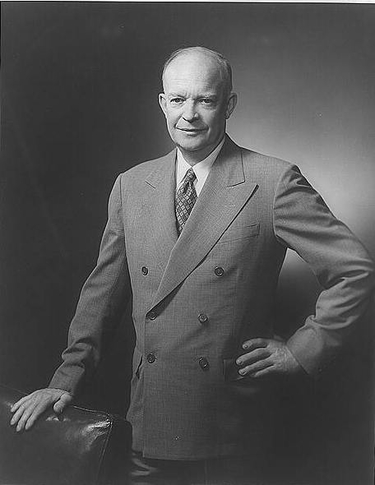
Enumeration
1960 marked the birth of the first mail-out census. Earlier censuses had used self-enumeration on a limited scale, but 1960 was the debut for this technique as a primary method for the collection of population and residential data. The postal service delivered questionnaires to every occupied housing unit. Householders were asked to complete the questionnaire and hold it for an enumerator to pick up.
Enumeration efforts were divided into two stages. The first stage concentrated on the quick collection of a few data items for every person and dwelling unit- information available from responses to questions on the questionnaire that had been delivered to every household. The second stage focused on the collection of more detailed economic and social information from a sample of households and dwelling units. Second stage questionnaires were hand-delivered by enumerators when they came to pick up the first form. Households receiving the second questionnaire were asked to complete the form and mail it to their local census office in postage-paid envelopes provided by enumerators.
In areas of low population density, the two-staged enumeration was combined to allow enumerators to collect and record sample data at the same time they came to fill out the general questionnaire.
Sampling
Additional sample questions were asked of 25 percent of the population. In urban areas (accounting for about 80 percent of the nation’s population), enumerators carried questionnaires containing the sample population and housing questions for every fourth housing unit. If the units were occupied, the householders were asked to complete the sample questionnaires and mail them to district offices. If the units were vacant, the enumerators completed the questionnaires.
The greater use of sampling meant that the totals for some less populated areas were subject to moderate amounts of sampling variation, which did not significantly impair the usefulness of the statistics gathered. Using a 25 percent sample of households eliminated nearly 75 percent of the processing expenses that would otherwise be required.
Additional questions, which had been discussed but not included in several past censuses, focusing on place of work and means of transportation to work were added in 1960.
Technological Advancement
Computers processed nearly all data from the 1960 census. For the first time, the Census Bureau used a film optical sensing device for input to computers (FOSDIC). This machine “read” and converted to code on magnetic tape data appearing on returned questionnaires thus eliminating the time and expense for the previously necessary step where clerks entered the data on punch cards. The questionnaires for 1960 were designed so that respondents could indicate their answers by marking small corresponding circles on the page. The completed questionnaires were photographed onto microfilm with automatic cameras; FOSDIC then read the blackened dots (which appeared as clear holes on the negative film) and transferred the data they represented to magnetic tape for the computer at a speed of 3,000 items per minute. Later versions of the FOSDIC device were able to process up to 70,000 items per minute.
Further Information
- A detailed procedural history of the 1960 census is available in 1960 Censuses of Population and Housing: Procedural History [66.7 MB]
- A wide variety of historical statistics from this and other decades is available in Historical Statistics of the United States: Colonial Times to 1970. It is available as a PDF [74.4MB] or 2-part ZIP file: Part I [52.2MB] | Part II [66.1MB].
- Reports and statistics from the 1960 census.
Information provided from Census.gov
Posted in Books & Reading, Census, Education & Training, General, Information Resources, What's Up Doc / Govdocs
Tagged census
Leave a comment
Book Briefs: New University of Nebraska Press Books at the Nebraska Publications Clearinghouse

The Nebraska Publications Clearinghouse receives documents every month from all Nebraska state agencies, including the University of Nebraska Press (UNP). Each month we will be showcasing the UNP books that the Clearinghouse receives. UNP books, as well as all Nebraska state documents, are available for checkout by libraries and librarians, for their patrons, in Nebraska.
Here are the UNP books the Clearinghouse received in February 2020:

Assembling Moral Mobilities : Cycling, Cities, & the Common Good Nicholas A. Scott
In the years since the new mobilities paradigm burst onto the social scientific scene, scholars from various disciplines have analyzed the social, cultural, and political underpinnings of transport, contesting its long-dominant understandings as defined by engineering and economics. Still, the vast majority of mobility studies, and even key works that mention the “good life” and its dependence on the car, fail to consider mobilities in connection with moral theories of the common good.
In Assembling Moral Mobilities Nicholas A. Scott presents novel ways of understanding how cycling and driving animate urban space, place, and society and investigates how cycling can learn from the ways in which driving has become invested with moral value. By jointly analyzing how driving and cycling reassembled the “good city” between 1901 and 2017, with a focus on various cities in Canada, in Detroit, and in Oulu, Finland, Scott confronts the popular notion that cycling and driving are merely antagonistic systems and challenges social-scientific research that elides morality and the common good. Instead of pitting bikes against cars, Assembling Moral Mobilities looks at five moral values based on canonical political philosophies of the common good, and argues that both cycling and driving figure into larger, more important “moral assemblages of mobility,” finally concluding that the deeper meta-lesson that proponents of cycling ought to take from driving is to focus on ecological responsibility, equality, and home at the expense of neoliberal capitalism. Scott offers a fresh perspective of mobilities and the city through a multifaceted investigation of cycling informed by historical lessons of automobility.

Death at the Edges of Empire : Fallen Soldiers, Cultural Memory, and the Making of an American Nation, 1863-1921 Shannon Bontrager (Series: Studies in War, Society, and the Military)
Hundreds of thousands of individuals perished in the epic conflict of the American Civil War. As battles raged and the specter of death and dying hung over the divided nation, the living worked not only to bury their dead but also to commemorate them. President Abraham Lincoln’s Gettysburg Address perhaps best voiced the public yearning to memorialize the war dead. His address marked the beginning of a new tradition of commemorating American soldiers and also signaled a transformation in the relationship between the government and the citizenry through an embedded promise and obligation for the living to remember the dead.
In Death at the Edges of Empire Shannon Bontrager examines the culture of death, burial, and commemoration of American war dead. By focusing on the Civil War, the Spanish-Cuban-American War, the Philippine-American War, and World War I, Bontrager produces a history of collective memories of war expressed through American cultural traditions emerging within broader transatlantic and transpacific networks. Examining the pragmatic collaborations between middle-class Americans and government officials negotiating the contradictory terrain of empire and nation, Death at the Edges of Empire shows how Americans imposed modern order on the inevitability of death as well as how they used the war dead to reimagine political identities and opportunities into imperial ambitions.

Follow the Angels, Follow the Doves : The Bass Reeves Trilogy, Book One Sidney Thompson (Series: The Bass Reeves Trilogy)
Follow the Angels, Follow the Doves is an origin story in the true American tradition. Before Bass Reeves could stake his claim as the most successful nineteenth-century American lawman, arresting more outlaws than any other deputy during his thirty-two-year career as a deputy U.S. marshal in some of the most dangerous regions of the Wild West, he was a slave.
After a childhood picking cotton, he became an expert marksman under his master’s tutelage, winning shooting contests throughout the region. His skill had serious implications, however, as the Civil War broke out. Reeves was given to his master’s mercurial, sadistic, Moby-Dick-quoting son in the hopes that Reeves would keep him safe in battle. The ensuing humiliation, love, heroics, war, mind games, and fear solidified Reeves’s determination to gain his freedom and drew him one step further on his fated path to an illustrious career.
Follow the Angels, Follow the Doves is an important historical work that places Reeves in the pantheon of American heroes and a thrilling historical novel that narrates a great man’s exploits amid the near-mythic world of the nineteenth-century frontier.
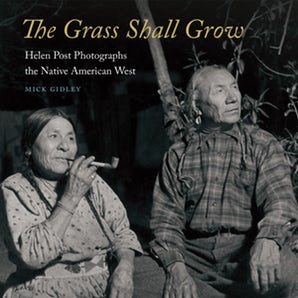
The Grass Shall Grow : Helen Post Photographs the Native American West Mick Gidley
The Grass Shall Grow is a succinct introduction to the work and world of Helen M. Post (1907–79), who took thousands of photographs of Native Americans. Although Post has been largely forgotten and even in her heyday never achieved the fame of her sister, Farm Security Administration photographer Marion Post Wolcott, Helen Post was a talented photographer who worked on Indian reservations throughout the West and captured images that are both striking and informative.
Post produced the pictures for the novelist Oliver La Farge’s nonfiction book As Long As the Grass Shall Grow (1940), among other publications, and her output constitutes a powerful representation of Native American life at that time. Mick Gidley recounts Post’s career, from her coming of age in the turbulent 1930s to her training in Vienna and her work for the U.S. Indian Service, tracking the arc of her professional reputation. He treats her interactions with public figures, including La Farge and editor Edwin Rosskam, and describes her relationships with Native Americans, whether noted craftspeople such as the Sioux quilter Nellie Star Boy Menard, tribal leaders such as Crow superintendent Robert Yellowtail, or ordinary individuals like the people she photographed at work in the fields or laboring for federal projects, at school or in the hospital, cooking or dancing.
The images reproduced here are analyzed both for their own sake and in order to understand their connection to broader national concerns, including the 1934 Indian Reorganization Act. The thoroughly researched and accessibly written text represents a serious reappraisal of a neglected artist.
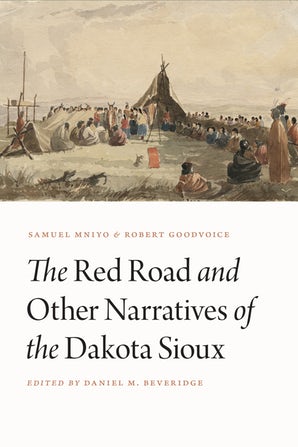
The Red Road and Other Narratives of the Dakota Sioux Samuel Mniyo & Robert Goodvoice; Edited by Daniel M. Beveridge (Series: Studies in the Anthropology of North American Indians)
This book presents two of the most important traditions of the Dakota people, the Red Road and the Holy Dance, as told by Samuel Mniyo and Robert Goodvoice, two Dakota men from the Wahpeton Dakota Nation near Prince Albert, Saskatchewan, Canada. Their accounts of these central spiritual traditions and other aspects of Dakota life and history go back seven generations and help to illuminate the worldview of the Dakota people for the younger generation of Dakotas, also called the Santee Sioux.
“The Good Red Road,” an important symbolic concept in the Holy Dance, means the good way of living or the path of goodness. The Holy Dance (also called the Medicine Dance) is a Dakota ceremony of earlier generations. Although it is no longer practiced, it too was a central part of the tradition and likely the most important ceremonial organization of the Dakotas. While some people believe that the Holy Dance is sacred and that the information regarding its subjects should be allowed to die with the last believers, Mniyo believed that these spiritual ceremonies played a key role in maintaining connections with the spirit world and were important aspects of shaping the identity of the Dakota people.
In The Red Road and Other Narratives of the Dakota Sioux, Daniel Beveridge brings together Mniyo and Goodvoice’s narratives and biographies, as well as songs of the Holy Dance and the pictographic notebooks of James Black (Jim Sapa), to make this volume indispensable for scholars and members of the Dakota community.
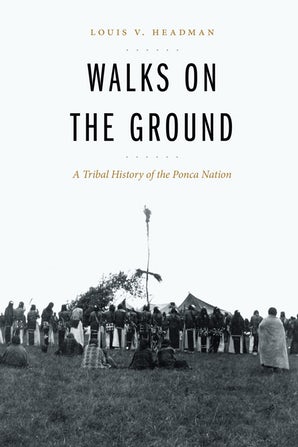
Walks on the Ground : A Tribal History of the Ponca Nation Louis V. Headman
Walks on the Ground is a record of Louis V. Headman’s personal study of the Southern Ponca people, spanning seven decades beginning with the historic notation of the Ponca people’s origins in the East. The last of the true Ponca speakers and storytellers entered Indian Territory in 1877 and most lived into the 1940s.
In Ponca heritage the history of individuals is told and passed along in songs of tribal members. Headman acquired information primarily when singing with known ceremonial singers such as Harry Buffalohead, Ed Littlecook, Oliver Littlecook, Eli Warrior, Dr. Sherman Warrior (son of Sylvester Warrior), Roland No Ear, and “Pee-wee” Clark. Headman’s father, Kenneth Headman, shared most of this history and culture with Louis. During winter nights, after putting a large log into the fireplace, Kenneth would begin his storytelling. The other elders in the tribe confirmed Kenneth’s stories and insights and contributed to the history Louis has written about the Ponca.
Walks on the Ground traces changes in the tribe as reflected in educational processes, the influences and effects of the federal government, and the dominant social structure and culture. Headman includes children’s stories and recognizes the contribution made by Ponca soldiers who served during both world wars, the Korean Conflict, the Vietnam War, Desert Storm, and the ongoing conflict in the Middle East.
**All synopses courtesy of University of Nebraska Press (https://www.nebraskapress.unl.edu/)
What’s Up Doc? New State Agency Publications at the Nebraska Library Commission
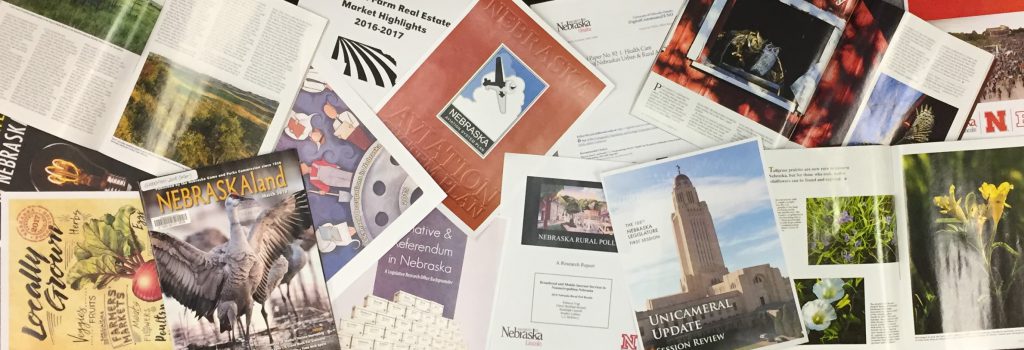
New state agency publications have been received at the Nebraska Library Commission for February 2020. Included are annual reports from a variety of Nebraska state agencies, comprehensive plans from various County Juvenile Services, economic development reports from the Nebraska Public Power District, new Extension Guides from the University of Nebraska–Lincoln Extension, budget reports from the Nebraska Unicameral Legislature, and new books from the University of Nebraska Press, to name a few.
Most items, except the books from the University of Nebraska Press, are available for immediate viewing and printing by clicking on the highlighted link above, or directly in the .pdf below. You can read synopses of the books received from the University of Nebraska Press in the Book Briefs blogposts.
The Nebraska Legislature created the Nebraska Publications Clearinghouse in 1972, a service of the Nebraska Library Commission. Its purpose is to collect, preserve, and provide access to all public information published by Nebraska state agencies. By law (State Statutes 51-411 to 51-413) all Nebraska state agencies are required to submit their published documents to the Clearinghouse. For more information, visit the Nebraska Publications Clearinghouse page, contact Mary Sauers, Government Information Services Librarian; or contact Bonnie Henzel, State Documents Staff Assistant.
DHHS Asking Nebraskans With Travel in Past 14 Days to Countries With Community Transmission of COVID-19 to Contact Local Health Department

| FOR IMMEDIATE RELEASE February 26, 2020 CONTACT Leah Bucco-White, Communications and Legislative Services, 402-471-9356 leah.bucco-white@nebraska.gov DHHS Asking Nebraskans With Travel in Past 14 Days to Countries With Community Transmission of COVID-19 to Contact Local Health Department Lincoln – The Nebraska Department of Health and Human Services (DHHS) and its public health partners continue to closely track the unfolding outbreak of coronavirus disease 2019 (COVID-19) and anticipate its impact on Nebraska and its health care systems. The virus originated in China and has spread to multiple other countries including the United States. So far, there have been no cases identified in Nebraska residents. “Ensuring the health of Nebraskans is our main priority and public health officials continue to actively monitor self-isolated Nebraska residents who recently returned from China,” said Dr. Tom Safranek, State Epidemiologist for DHHS. “Based on the spread of COVID-19 and an increase in cases in other countries, DHHS is now including Hong Kong, Japan, South Korea, Iran, Italy, Singapore, Taiwan, Thailand and Vietnam, along with China. We’re asking people with travel to these countries in the last 14 days to either self-report to the Nebraska public health online system at http://dhhs.ne.gov/Pages/Coronavirus.aspx or contact their local health department for guidance and next steps. Informing the local health department of recent travel history is the most direct way to ensure timely medical care if needed and to minimize the potential risk to others.” A map of Nebraska’s local health departments can be found here http://dhhs.ne.gov/CHPM%20Maps/NE_Health_Dept_Map_Dec_2016.pdf . A list of local health departments along with contact information is provided below. It is important to remember that people who may become ill upon returning from overseas travel are more likely to have other respiratory illnesses typically seen this time of year like flu, which might also require treatment. However, it is very possible that we could see travel-related COVID-19 cases in Nebraska residents. State and local public health officials continue to take action to prevent the spread of disease and protect the health of Nebraskans including: Sharing the latest guidance and information with local health departments, hospitals, health care providers, first responders and local and state labs through our extensive Health Alert Network to ensure a well-coordinated response in Nebraska. DHHS Health Alert Network – http://dhhs.ne.gov/Pages/Health-Alert-Network.aspx Assessing our health care system’s readiness to identify, monitor and treat patients with coronavirus disease 2019. Engaging in active and ongoing communication with the Centers for Disease Control and Prevention and other state and federal partners as part of the overall national response to this emerging public health threat. Reviewing and enhancing response plans to be ready for the detection of COVID-19 in our state. Facilitating confirmatory testing, isolation and monitoring of Nebraskans experiencing symptoms to identify cases as soon as possible. Updating dhhs.ne.gov/coronavirus with the latest information and resources. With our local health department partners, we have a system in place to track and monitor people who have contact with a confirmed case in an effort to immediately detect secondary cases and minimize the potential for ongoing, undetected, person-to-person transmission. Nebraskans are also encouraged to review their family preparedness plans in the event that coronavirus disease 2019 continues to spread in the United States. More resources will be available soon at http://www.dhhs.ne.gov/coronavirus. People can help protect themselves from COVID-19 and other respiratory infections by: Washing hands often with soap and water for at least 20 seconds. If soap and water aren’t available, use an alcohol-based sanitizer. Avoid touching your eyes, nose, and mouth with unwashed hands. Avoid close contact with sick people and stay home if you are sick. Cover your nose and mouth with a tissue when you cough or sneeze then throw the tissue in the trash. Clean and disinfect frequently touched objects and surfaces. To learn more about COVID-19, go to http://www.dhhs.ne.gov/coronavirus or https://www.cdc.gov/covid19. Contact information for Nebraska’s local health departments COUNTY HEALTH DEPARTMENTS Clay County Health Department 202 West Fairfield Clay Center Phone: (402) 762-3571 Website: www.claycounty.ne.gov (Clay County/Clay Center) Dakota County Health Department 1601 Broadway Street/Box 155 Dakota City Phone: (402) 987-2164 Website: www.dakotacountyne.org (Dakota County/Dakota City) Douglas County Health Department Communicable Disease Epidemiology Section 1111 South 41st Street Omaha Phone: (402) 444-7214 Website: www.douglascountyhealth.com (Douglas County/Omaha) Polk County Health Department 330 North State Street/Box 316 Osceola Phone: (402) 747-2211 Website: https://polkcounty.nebraska.gov/county–offices/health–department (Polk County/Osceola) Red Willow County Health Department 1400 West 5th McCook Phone: (308) 345-1790 Website: http://redwillowhealth.com (Red Willow County/McCook) Scotts Bluff County Health Department 1825 10th Street Gering Phone: (308) 436-6636 Website: www.scottsbluffcounty.org/health–department/health–department.html (Scotts Bluff County/Gering) CITY-COUNTY HEALTH DEPARTMENT Lincoln-Lancaster County Health Department 3131 “O” Street Lincoln Phone: (402) 441-8000 Website: www.lincoln.ne.gov/city/health (Lancaster County/Lincoln) DISTRICT HEALTH DEPARTMENTS Central District Health Department 1137 South Locust Street Grand Island Phone: (308) 385-5175 x178; Toll Free: (877) 216-9092 Website: www.cdhd.ne.gov (Hall County/Grand Island, Hamilton County/Aurora, Merrick County/Central City) East Central District Health Department 4321 41st Avenue Columbus Phone: (402) 562-8950 Email: bwewel@ecdhd.ne.gov Website: http://ecdhd.ne.gov (Boone County/Albion, Colfax County/Schuyler, Nance County/Fullerton, Platte County/Columbus) Elkhorn Logan Valley Public Health Department Box 779 Wisner Phone: (402) 529-2233; Toll-Free: (877) 379-4400 Website: www.elvphd.org (Burt County/Tekamah, Cuming County/West Point, Madison County/Madison, Stanton County/Stanton) Four Corners Health Department 2101 North Lincoln Avenue York Phone: (402) 362-2621; Toll-Free: (877) 337-3573 Website: www.fourcorners.ne.gov (Butler County/David City, Polk County/Osceola, Seward County/Seward, York County/York) Loup Basin Public Health Department 934 “I” Street/Box 995 Burwell Phone: (308) 346-5795; Toll-Free: (866) 522-5795 Website: www.loupbasinhealth.com (Blaine County/Brewster, Custer County/Broken Bow, Garfield County/Burwell, Greeley County/Greeley, Howard County/St Paul, Loup County/Taylor, Sherman County/Loup City, Valley County/Ord, Wheeler County/Bartlett) North Central District Health Department 422 East Douglas Street O’Neill Phone: (402) 336-2406; Toll Free: (877) 336-2406 Website: www.ncdhd.ne.gov (Antelope County/Neligh, Boyd County/Butte, Brown County/Ainsworth, Cherry County/Valentine, Holt County/O’Neill, Keya Paha County/Springview, Knox County/Center, Pierce County/Pierce, Rock County/Bassett) Northeast Nebraska Public Health Department 215 North Pearl Street Wayne Phone: (402) 375-2200; 24/7 Phone: (402) 369-3822 Website: www.nnphd.org (Cedar County/Hartington, Dixon County/Ponca, Thurston County/Pender, Wayne County/Wayne) Panhandle Public Health District 808 Box Butte Avenue Hemingford Phone: (308) 487-3600 Website: www.pphd.org (Banner County/Harrisburg, Box Butte County/Alliance, Cheyenne County/Sidney, Dawes County/Chadron, Deuel County/Chappell, Garden County/Oshkosh, Grant County/Hyannis, Kimball County/Kimball, Morrill County/Bridgeport, Scotts Bluff County/Gering, Sheridan County/Rushville, Sioux County/Harrison) Public Health Solutions District Health Department 995 East Highway 33/Suite 1 Crete Phone: (402) 826-3880 Website: http://phsneb.org (Fillmore County/Geneva, Gage County/Beatrice, Jefferson County/Fairbury, Saline County/Wilber, Thayer County/Hebron) Sarpy/Cass Health Department 701 Olson Drive/Suite 101 Papillion Phone: (402) 339-4334 x6978; Toll Free: (800) 645-0134 Website: www.sarpycasshealthdepartment.org (Cass County/Plattsmouth, Sarpy County/Papillion) South Heartland District Health Department 606 North Minnesota/Suite 2 Hastings Phone: (402) 462-6211; Toll Free: (877) 238-7595 Website: southheartlandhealth.org (Adams County/Hastings, Clay County/Clay Center, Nuckolls County/Nelson, Webster County/Red Cloud) Southeast District Health Department 2511 Schneider Avenue Auburn Phone: (402) 274-3993; Toll Free: (877) 777-0424 Website: www.sedhd.org (Johnson County/Tecumseh, Nemaha County/Auburn, Otoe County/Nebraska City, Pawnee County/Pawnee City, Richardson County/Falls City) Southwest Nebraska Public Health Department 404 West 10th Street McCook Phone: (308) 345-4223 Website: www.swhealth.ne.gov (Chase County/Imperial, Dundy County/Benkelman, Frontier County/Stockville, Furnas County/Beaver City, Hayes County/Hayes Center, Hitchcock County/Trenton, Keith County/ Ogallala, Perkins County/Grant, Red Willow/McCook) Three Rivers Public Health Department 2400 North Lincoln Street Fremont Phone: (402) 727-5396; Toll Free: (866) 727-5396 Website: https://threeriverspublichealth.org (Dodge County/Fremont, Saunders County/Wahoo, Washington County/Blair) Two Rivers Public Health Department 701 4th Avenue/Suite 1 Holdrege Phone: (308) 995-4778; Toll Free: (888) 669-7154 Website: http://trphd.org (Buffalo County/Kearney, Dawson County/Lexington, Franklin County/Franklin, Gosper County/Elwood, Harlan County/Alma, Kearney County/Minden, Phelps County/Holdrege) West Central District Health Department 111 N Dewey/Suite A North Platte Phone: (308) 696-1201 Website: http://wcdhd.org (Arthur County/Arthur, Hooker County/Mullen, Lincoln County/North Platte, Logan County/Stapleton, McPherson County/Tryon, Thomas County/Thedford) NOTE: After each county name is the county seat. |
What’s Up Doc? New State Agency Publications at the Nebraska Library Commission

New state agency publications have been received at the Nebraska Library Commission for January 2020. Included are Annual Reports from a variety of Nebraska state agencies, Rules and Regulations from the Nebraska Jail Standards Board, economic development reports from the Nebraska Public Power District, new Fishing and Boating Guides from the Nebraska Game and Parks Commission, reports from the Nebraska Department of Transportation, and new books from the University of Nebraska Press, to name a few.
Most items, except the books from the University of Nebraska Press, are available for immediate viewing and printing by clicking on the highlighted link above, or directly in the .pdf below. You can read synopses of the books received from the University of Nebraska Press in the Book Briefs blogposts.
The Nebraska Legislature created the Nebraska Publications Clearinghouse in 1972, a service of the Nebraska Library Commission. Its purpose is to collect, preserve, and provide access to all public information published by Nebraska state agencies. By law (State Statutes 51-411 to 51-413) all Nebraska state agencies are required to submit their published documents to the Clearinghouse. For more information, visit the Nebraska Publications Clearinghouse page, contact Mary Sauers, Government Information Services Librarian; or contact Bonnie Henzel, State Documents Staff Assistant.
2020 Census Preparation Manual
The 2020 Census will be conducted primarily online, creating additional obstacles to counting already under-counted populations. With this in mind, communities and organizations are preparing to support enumeration efforts by providing safe internet access points, answering questions from the community, and tracking incidents that arise.
The Digital Equity Laboratory has released a learning guide, Preparing for the First Digital Census, meant for anyone who intends to work with communities towards a complete count during Census 2020. Based on expert risk assessments and a series of pilot workshops across New York State, they have compiled a set of curriculum modules intended to equip organizations with the information and tools they need to play their part.
The goal is to provide both digital and public-facing tactics and techniques to reduce confusion, find the right path to participation for all, help prevent possible harms, and enable communities to better prepare against the uncertainties of a digital census. The aim has been to address holistic safety concerns, not solely cybersecurity.
Complete manual: “Preparing for the First Digital Census”


